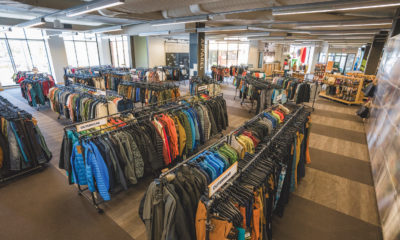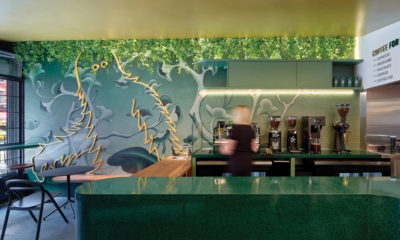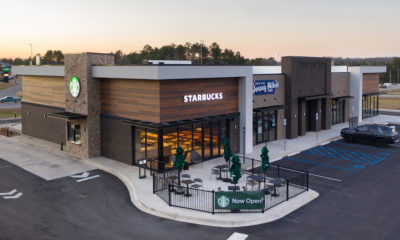Tesco, the U.K. supermarket giant, has taken another big step in its ongoing eco-program with a 50,000-square-foot store made entirely of wood. The store – which Tesco is considering a “trial” – is in Wick, a small town in Scotland’s far north with a population of a little over 8000. Go any farther north and you fall into the stretch of water that separates this country from the Orkneys and the Shetlands, islands that lie between Scotland and Iceland. It’s a long way from anywhere in particular.
Yet Tesco has chosen this remote setting for the U.K.’s first wooden supermarket, in a bid to show that real sustainability can mean more than low-energy light bulbs or a few wind turbines on the roof. There are, in fact, windmills atop this 50,000 square-foot shed. And it does have enhanced levels of natural daylight. But the real point of the shop is its timber structure, inside and out.
Timber is in conspicuously short supply in northern Scotland, which is why all of the wood used in the store comes from Finland, where sustainable forests and wood are plentiful (timber is the country’s number one export) and large wooden structures are not unknown. A number of Finnish companies specialize in providing retailers with pre-fabricated wooden store kits.
Tony Vasishta, head of development at Tesco, points out that getting the timber to Wick from Finland required substantially less energy than would have been the case had the store been built from metal and the materials transported by land. “The equivalent of 80 large truckloads worth of timber has been bought from Finland on a single boat,” he says. The wood arrived at Wick’s port, less than a mile from the store site.
Externally, the store looks like any other medium-sized Tesco branch, except that it’s clad in brown-orange plywood and there’s a triangular skylight on the roof, glazed on its north-facing aspect and running the length of the shop, blasting daylight into the interior. The skylight’s south-facing side is covered with photo-voltaic cells (solar panels), generating some of the store’s electricity needs on site.
The skylight helps reduce the store’s reliance on artificial in-store lighting, especially in Scotland’s summer, when sunlight approaches 24 hours a day. And the five windmills on the roof also do their bit to reduce the store’s carbon footprint. The area surrounding Tesco Wick is very flat and high winds sweep straight in from the North Atlantic, rotating the turbines and feeding into the store’s electrical grid almost non-stop.
James Dorling, Tesco’s project manager for environmental stores, is careful not to exaggerate the combined effect of windmills and solar panels. “Those two technologies are still very early,” he says, “but we want to keep our foot in both of those areas. Right now I’d say they account for less than 10 percent of the total energy requirement in the store.”
Inside, in place of the normal steel skeleton, massive timber beams and joists support the roof. Even the overhead signage has been fashioned from wood, painted in Tesco’s usual departmental blue, red or green.
Tesco proudly tells its shoppers why it has chosen to build a shop from timber. Signs around the store ask, “Why use a wooden frame?” Just inside the entrance, there’s a café with information on each of its walls explaining why a store of this kind is important and how it works.
Because of Wick’s remote location, the store has a larger warehouse than is typical in a medium-sized Tesco store. (The closest distribution center is three to four hours south.) The larger storeroom means merchandise replenishment needs take place only every other day, further saving on fuel and allowing Tesco to make a green virtue of logistical necessity.
The project took 18 weeks from the time timber was unloaded from the boat and the retailer admits it cost more than a comparable metal-based store to build. But Tesco is committed to the experiment and hopes volume purchases and value-engineering will modulate some of those costs. Two more wooden branches are planned for 2007 and Vasishta says he’ll be back combing the woods of Finland for other suppliers.
To monitor the store’s energy savings, Tesco has installed a series of meters to measure everything from the electricity generated via the wind turbines to the amount of power being used by the store at any particular moment. “We’ve benchmarked this store against comparably sized branches over the last two months and we predict its carbon footprint will be around 50 percent smaller,” says Dorling. “All the metering we’ve put into the store will help us make sure we’re saving what we hope to save.”
In the meantime, Tesco has a cutting-edge addition to its store portfolio that keeps the U.K.’s largest retailer in the eco-vanguard.
Client – Tesco, Cheshunt, England
Design/Lead Consultant/General Contractor – Barr Construction, Ayr, Scotland
Architect – Ian Burke Associates, Edinburgh, Scotland
Outside Design Consultants – Goodson Associates, Edinburgh, Scotland (civil/structural engineering); Ove Arup & Partners, Dundee, Scotland, and London (highway engineering); Thomas and Adamson, Edinburgh, Scotland (quantity surveying); George Birchall, Newcastle-Under-Lyme, England (mechanical engineering); EIC Ltd., Stratford-upon-Avon, England (electrical consultant)
Refrigerators – Blighline, Canterbury, England
Shelving – Radfords, Newcastle-Upon-Tyne, England
Shopfitting/Wooden Counters – Essanby, Harlow, England
Store Frame/Timber Cladding – Finnforest, Espoo, Finland
Signage/Graphics – Astound, London; ACE, London
Photography: John Ryan, London
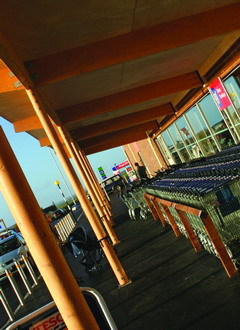

 Special Reports4 days ago
Special Reports4 days ago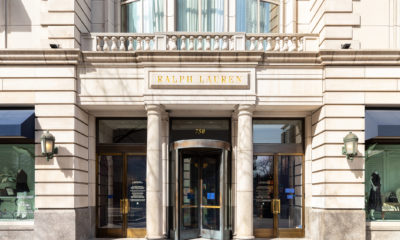
 Headlines2 weeks ago
Headlines2 weeks ago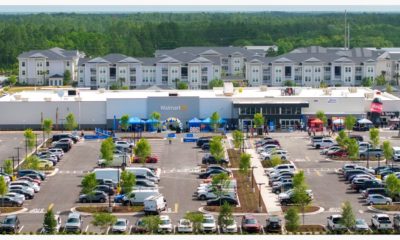
 Headlines2 weeks ago
Headlines2 weeks ago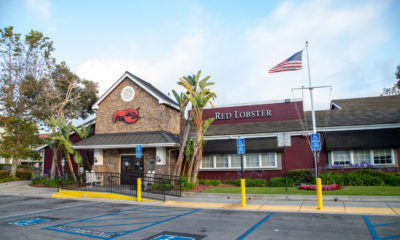
 Headlines2 weeks ago
Headlines2 weeks ago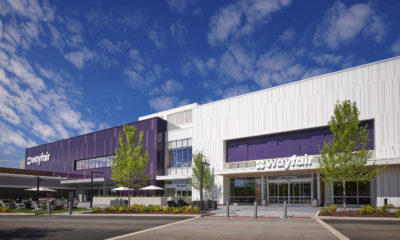
 Headlines1 week ago
Headlines1 week ago
 Eric Feigenbaum5 days ago
Eric Feigenbaum5 days ago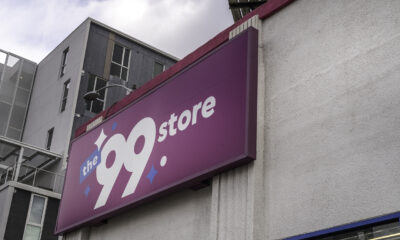
 Headlines4 days ago
Headlines4 days ago
 NXTLVL Experience Design2 weeks ago
NXTLVL Experience Design2 weeks ago







